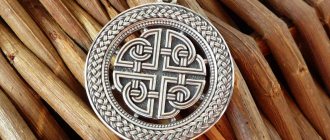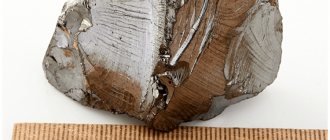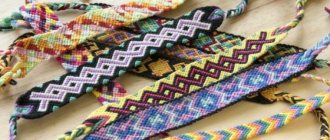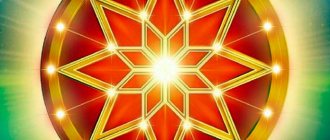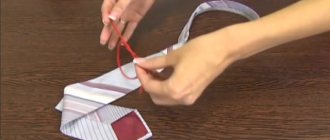It is difficult to find another more ancient symbol for magical rituals than the knot. There are a huge number of them and they all have their own special magical essence, which is twofold. On the one hand, all knots are tied in a special way, and in the sacraments this means tying something or capturing it. On the other hand, each knot can be untied, which means freeing oneself from influence or attachment. At the same time, the knot itself retains the general idea of the sacrament. Each knot carries a magical load, it is important why it was tied. This could be attracting happiness, love, success to a person or home, or it could be the opposite - damage, sadness, or other negative aspects of life.
The knot as a magical symbol among different peoples
Each people, depending on their occult preferences, interpreted the meaning of the nodes differently:
- In Ancient Egypt, priests were of great importance in people's lives, who considered the knot to be the concentration of the power of magic. With their help, the priests first captured and then held back spirits and other natural forces. Based on the knots, they created complex multi-layered amulets to protect a person from the “evil eye” or diseases.
- The ancient Greek legend that has come down to us tells about the Gordian knot. The Macedonian did not spend a long time looking for a solution and unraveling the complex rope tied by King Gordius - but cut it. In those days, a cleverly tied thread was considered a symbol of science and its inaccessibility to everyone, because in order to unravel it, you need to look for different options that are not available to everyone. Macedonian, in this case, took advantage of his main rule - the right of the strong.
- The Slavic culture of the ancient Magi also considered knots to be magical protective talismans against the undead and the evil eye. This was especially true for girls - they wore a thin red belt with knots to prevent damage. Sometimes they put a fishing net on the bride, consisting of hundreds of knotted threads with a belt of forty knots, and a prayer was read over each of them. This attitude towards the tied threads was due to the belief that the witch and the sorcerer would not reach the person until they had dealt with all the ties.
NEWS LIBRARY LINKS SITE MAP ABOUT THE SITE
Cunning weaves
Now you will get acquainted with knots, the threads of which are intertwined according to the darning principle. There are no knots in them; they are woven only with working threads.
The complexity of a knot has always been assessed by the number of weaves. And we have been left a lot of such nodes as a legacy. At first, many of them are striking in their intricacy and seem like puzzle knots, but the basis of these complex weaves is the familiar principle of darning, and mastering these knots is accessible to everyone.
Such knots also include mysterious talisman knots that have come down from ancient times. Each of them has its own symbolism and a rule common to all: their ends are closed in a ring and therefore the talisman knot cannot be untied.
In people's lives, these knots meant a lot: they were deified and attributed magical properties to them, they believed in their witchcraft powers, and for the theft of enchanted knots they were sentenced to death.
Symbolic knots were worn as amulets, they were embroidered with gold threads on clothes, and repeated in wood and stone carvings. In ancient handwritten books, intricate ligature of talismanic knots is also found in the designs of capital letters (Fig. 82).
Rice. 82. The initial letter of the Old Russian letter Z ('live') symbolizes life
Competitions were often held between those who knew how to quickly tie knots - puzzles.
Each node had its own name, given to it for certain properties, for example, “knot of happiness”, “knot of marriage”, “tree of life”, “monkey’s fist” (Fig. 83-86).
Rice. 83. 'Knot of Happiness'
Rice. 84. 'Knot of Matrimony'
Rice. 85. Tree of life knot
Rice. 86. Monkey fist knot
Centuries have passed, and some talismanic knots, thanks to the beauty born of symmetry, have become decorative objects in our everyday life: rugs, napkins, panels.
Weaving these things, many are unaware of the ancient, rich and legendary history of these knots. They are now called decorative or ornamental knots.
How to weave threads in decorative knots
To master this technique, we advise you to practice on an elastic, thick rope, first smearing its ends with glue - it will be easier to work with hardened ends. First, they lay out a knot diagram with a rope (like a frame), then with one of the ends of the rope they repeat (duplicate) all the weaves of the knot, moving along the labyrinth diagram, so one end should be 4-5 times longer than the other. If the product is large, for example a rug, then it is more convenient to repeat the knot with additional ropes so as not to take too long ends at the beginning of the work.
At the end of the work, the ends are glued to the wrong side (the knot is closed), and sometimes, so that the knot does not deform, the entire surface of its wrong side is smeared with glue.
"Knot of Happiness"
This is the most ancient knot - the “eternal knot”. He was credited with magical powers. He is known in the art of all the peoples of Europe and Asia. The most ancient ornaments on stone, wood carvings, and women's jewelry brought to us the outline of this knot.
Fold a meter rope in half and fasten the loop upward on the pillow - you get 2 ends (Fig. 87).
Rice. 87. Interweaving threads in a 'knot of happiness'
Place the 2nd end in a loop and place it on the 1st end.
Place the 1st end on the bent 2nd and pass up to the right under the resulting loop.
First place the 2nd end under the 1st, and then pull it out of the loop on top of it.
Place the 1st end on the 2nd and pass it down into the loop - the knot frame is ready. It remains to duplicate its weaves (Fig. 88).
Rice. 88. Braided 'knot of happiness'
Two “knots of happiness” connected together form a “knot of marriage” - this ancient knot composition (Fig. 89).
Rice. 89. Two-color braided “marriage knot”
"The tree of Life"
Our ancestors saw in it the eternal continuation of life on Earth. It was found in ancient burials and used to decorate women's clothing.
'The tree of Life'
Fold a meter rope in half and fasten the loop upward on the pillow (Fig. 90).
Rice. 90. Sequence of laying out the 'tree of life' node
Place the 1st end on the 2nd and pass under the resulting loop up to the left.
Place the 2nd end on the 1st, thread it under it and pull it up to the right.
Lower the 1st end down into the left loop, passing over its upper part and passing under the lower one.
Lower the 2nd end into the right loop, passing it under the top part and bringing it above the bottom - the frame of the knot is ready. Duplicate it twice: first with a colored thread, and then with the main thread (Fig. 91).
Rice. 91. Two-color braided tree of life knot
Josephine knot
Unlike previous nodes, this node is not independent - (closed). Usually it is a fragment of the pattern and is woven simultaneously with it on the same threads. To emphasize the beauty of the knot, it is most often woven from bundles of threads, less often from two ends.
The Josephine knot consists of two intertwined loops. First try to weave a knot from two thick threads 50 cm long. Pin the threads side by side on the pillow (Fig. 92).
Rice. 92. Weaving threads in a Josephine knot
Bend the 1st end into a loop and place it on the 2nd - you get a loop on the right.
Place the 2nd end on the 1st, and then under it. Lower the 2nd end into the right loop, passing it under the 2nd end and placing it on the right loop - a left loop is formed. Align the knot by pulling on its loops. Continue tying knots - you will get a chain (Fig. 93).
Rice. 93. Chain of Josephine knots
The Josephine knot is quite capricious: due to its mobility, it does not immediately fit in one plane, so be careful to ensure that all the loops of the knot are exactly the same.
A Josephine knot made from two bundles of threads (Fig. 94) is tied in the same way as from two ends. One of the bundles is sometimes made colored. During weaving, the threads of the bundle can get tangled, then they are straightened with a needle or knitting needle.
Rice. 94. Josephine knot made of 2 bundles of threads
Turkish knot
The knot consists of four intertwined loops. The frame of the knot is always made from one thread, folded and secured with a pin with the loop facing upward (top loop). One end is left longer so that it can go through the labyrinthine diagram of the finished unit.
Perform the knot like this: under the top loop, place a “Josephine” knot - 2 more loops are formed - side ones (Fig. 95, a). Now with the long end (1st) form the lower loop - the 4th and then with the same end repeat the weave of the knot (Fig. 95, b and c, for clarity, the movement of the 1st end is highlighted in a different color).
Such a knot can be turned into a ball, if you tighten the ends, the knot will become denser (Fig. 95, d). To make the Turkish knot closed (Fig. 95, d), it should be duplicated.
Rice. 95. The sequence of laying out the thread in the Turkish knot
Turkish turban knot
This knot (Fig. 96) is woven around a cylindrical object (Fig. 97), then the finished knot is removed and the remaining threads are hidden inside the knot.
Rice. 96. Turkish knot 'turban'
Rice. 97. Turkish turban knot sequence
"Monkey Fist" ("Monkey Knot")
This knot was attributed to a terrible magical power - witchcraft. It differs from all other talisman knots in its unusual shape - it is a ball knot (as a rule, talismans were flat in shape).
The knot is performed in several ways. It can be tied by twisting the threads around your fingers. Cut a rope 1 m long. Take one end 10 cm long in your left hand, and with the other (long) place 3 turns with your right hand on the spread index and middle fingers of your left hand (Fig. 98, a), without removing the turns from the fingers, wrap with their long end 3 times between the fingers (Fig. 98, b), now remove the turns from the fingers and with the same end pass 3 times into the holes where the fingers were (Fig. 98, c) - the knot is ready. The ends of the rope should hang over one side of the knot.
Rice. 98. Sequence of tying a 'monkey knot' at one end
You can tie a knot in another way: alternately with two ends of the same length (Fig. 99).
Rice. 99. Sequence of tying a 'monkey knot' with two ends alternately
"Sea Rugs"
These braids (Fig. 100), varying in shape and number of weaves, were invented by sailors on long voyages, taking a break from their difficult naval service with this activity.
Rice. 100. Two-color 'sea rug'
The weaving patterns of “sea rugs” (Fig. 101) resemble a complex labyrinth that is not easy to navigate. We hope that, having taken your first steps in weaving, you will be patient, gain some experience and try your hand at navigating the path through the labyrinth on your own.
Rice. 101. 'Sea rugs' and their weaving patterns
Continuation of Fig. 101
Longevity knot meaning
One of the most common and complex is the longevity or infinity knot. It is tied in such a way that it is impossible to find where one end begins and the other ends. The complexity of the weave is explained by its meaning. The Tibetan knot, as it is otherwise called, is one of the eight symbols of Tibetan Buddhists. It opens the way to knowledge of the great secret of immortality, as well as unfading youth and beauty. The continuity of the line, its infinity, encourages a person to be patient and remain consistent in achieving his goals, and the complexity of tying it speaks of the complexity of the path of knowledge.
In the Vajrayana system - the yogic occult practice of Buddhist traditions, the interpretation of this symbol is more complex and profound. In this system, the Infinity Knot personifies universal justice and is considered a symbol of fate entangling everything earthly with its threads. Its complex interweavings stretching into infinity express the main karmic law - everything has consequences. Thoughts, actions, deeds done by a person will certainly affect him over time. Every time, unraveling a problem or difficulty in one place, our fate, according to the karmic laws of the Universe, ties it up in another place.
In Buddhist philosophy, the knot determines the inseparability of the concepts of compassion and wisdom - the main qualities of life that help to cope with internal contradictions and imperfections of the world. This symbol has become part of meditation, helping to understand oneself and the Universe around.
The dual meaning of the knot for happiness
If you look closely at this node, you can see the infinity symbol. This sign is considered ancient. And many people attribute magical properties to it. In Tibet, the symbol of endless energy is one of the eight most auspicious Buddhist signs.
At the same time, a node containing infinity signs has a dual meaning. When you tie it, you attract something into your life, home, family. When the knot is untied, the energy flowing in a circle is freed and thereby relieves you of any problems.
If the knot is tied, it is able to maintain positive energy and attract positive events into your life. It is also believed that the infinity present in this weaving of the knot indicates the existing relationship between everything that is on our planet.
This knot is also mentioned in Chinese traditions. It is equated with symbols of happiness, prosperity, financial stability, and is associated with excellent health and longevity.
Amulet knot of longevity
Many symbols that had special meaning in ancient times have lost their relevance over time. The knot of longevity continues to be an important component of magic and philosophy of knowledge. This is due to its complexity. Each time a person discovers in a new way the depth and subtlety of its creation, the complexity of decoding.
A Tibetan knot, made in the form of an amulet pendant, puts its owner in a state of balance and harmony, helps to understand the meaning and reasons for committing certain actions.
It is important to understand that the infinity knot is not a magic wand. It begins to act only if a person uses it consciously, transmits his desires through it to the Universe and makes efforts to realize them. He does not fulfill the wishes of the “owner” - he gives an impetus and helps to concentrate to achieve a victorious goal.
Good luck nodes in feng shui
Feng Shui Lucky Knot
In addition to the mystical knot, the so-called knots of luck are also of no small importance in the teachings of Feng Shui. Their name speaks for itself - they attract good luck to the house, contribute to the improvement of their owner’s affairs and are favorable in all his endeavors.
There is more than one type of these knots, but the most common among them are the Luck Knot of the same name, as well as the Flower Knot.
The Good Luck Knot can be purchased in specialized stores, but it will be better if you weave it yourself. At the same time, it is very important when weaving to pronounce positive statements (affirmations) to yourself in the present tense, as if you already have everything you want.
Be it success in business or career growth, luck in love or increasing wealth - all this will allow you to attract the Node of Luck into your life.
Another knot that is widespread in Feng Shui is the Floral knot, which is a figure reminiscent of clover petals. This plant is traditionally considered a symbol of good luck in many cultures.
Clover is a symbol of good luck
The flower knot is quite simple to weave, so making it yourself is not difficult. You can decorate it with beads, pendants and wear it around your neck as a pendant, or just take it with you and hang it in your home.
You will see for yourself how much your affairs will improve when you acquire this talisman.
What does a longevity amulet look like?
The infinity knot can be made of any material. It can be:
- Wire weaves;
- Weaves of cord, ribbon;
- An image drawn on paper;
- Knots made with your own hands or purchased from a ritual store;
- Jewelry.
Whatever the amulet, if its owner transforms his energy into it, it will work for positivity and well-being.
Origin of the node
The origin of the mystical meaning of this knot is rooted in Tibetan mythology. It is most widespread in the Buddhist religion. But it is still called the Tibetan infinity knot.
The outer form of the bundle consists of multiple interlacing of eights - a universally recognized symbol of infinity. Weaving of six eights or more, but a multiple of six, is considered traditional. Because many beliefs consider this number to be lucky and bring good luck.
Such a knot is one of the symbols of Tibetan Buddhism, called auspicious. There are eight of these signs in total. According to legend, they were given by the gods to a sage who had achieved Perfect Awakening. Drawings of these eight symbols are often found in Buddhist temples in Tibet and Mongolia. Believers still keep their images in their homes to attract good luck and prosperity.
It is believed that the origin of the infinity knot comes from Ouroboros - a snake that bites its own tail. This symbol came to India and Tibet from Ancient Egypt. And it received its further development in the tantric concept of Kundalini.
Infinity knot in feng shui
Feng Shui is the philosophy of changing the space around you. The knot has always been used here as a symbol that helps to find good luck, achieve prosperity and success. It is often used in ornaments, embroidery, carvings and interior design. Combined into a single composition with other symbols or amulets, it can increase its effect many times over. Infinity attached to money talismans gives them an inexhaustible stream of financial profit. Tied to a love amulet - helps to enjoy great love. Health, creativity, self-knowledge - everything connected to the Tibetan knot increases indefinitely.
Mystical feng shui knot
Mystic knot
The mystical knot (also sometimes called magical) represents the infinity of abundance - in money, health, love, and so on. According to the teachings of Feng Shui, the energies that make up our entire world can give a person abundance in everything, and the most important thing is to enter into harmony with these forces.
It is talismans, which include the mystical knot, that can help a person with this. The area of your life it will impact depends on which sector of your home you decide to place it in.
WATCH THE VIDEO
For example, if your main goal today is to improve your material well-being, hang a mystical knot in the wealth sector. You can also tie it to any amulet that you already have, and then the knot will increase its influence.
The Feng Shui magic knot is often used not just as a separate talisman, but also as an addition to jewelry, clothing, and interior items. In this case, it protects its owner from the effects of negative energies. Moreover, the knot can not only be tied, but also drawn or even engraved.
